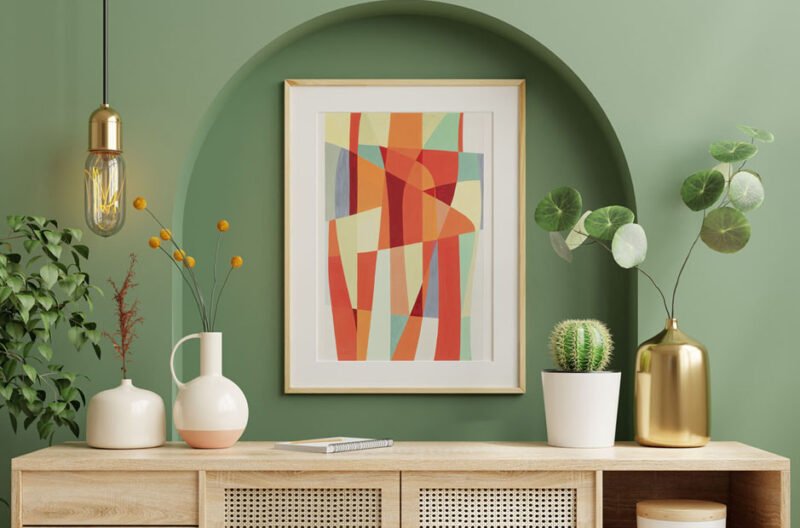Key Takeaways
- Integrating art with furniture creates a personalized and dynamic living space.
- Choosing pieces with subtle details and layering textures can enhance the aesthetic appeal.
- Incorporating vintage accents adds character and depth to your home.
- Art-infused spaces can foster community and collaboration.
Introduction
Today’s homes are more than just places to live—they are immersive environments that reflect individuality, comfort, and a love for aesthetics. One powerful trend reshaping interiors is the thoughtful integration of art and furniture. This approach transforms rooms into dynamic expressions of personality and cultivates inviting and inspiring atmospheres. Introducing artful touches alongside luxury home furniture allows homeowners to curate settings as functional as they are visually striking, seamlessly marrying comfort with creativity.
Whether establishing a serene reading nook, designing a communal living area, or developing your home-based gallery, combining furniture with unique artworks lets you achieve a distinct signature style. Showcasing custom pieces, layering diverse materials, and incorporating historical or romantic design elements are easy yet impactful ways to elevate your living spaces. By weaving these creative threads, every room can become a gallery of self-expression and refined taste.
Choosing Furniture with Subtle Details
Start by selecting furniture pieces designed with artisanal craftsmanship and understated charm. Options like curved sofas envelop a room in softness, while bobbin stools provide a playful nod to traditional woodworking. According to industry expert Shea McGee, these detailed yet subtle choices set the tone for a luxurious, welcoming space without overpowering the overall design. Attention to detailed accents—such as carved legs, unique upholstery, or sculptural silhouettes—can elevate the ordinary to the extraordinary, blending effortlessly with fine art or statement décor.
Incorporating Vintage Accents
Vintage décor has an uncanny ability to enrich a space with nostalgia and character. Introducing items like antique mirrors, retro lighting fixtures, or mid-century side tables fosters a sense of history and narrative within your home. Solid wood living room furniture adds a timeless quality, seamlessly blending traditional craftsmanship with modern comfort. The rich textures and durability of solid wood provide both visual appeal and practicality, enhancing the overall warmth and charm of the room. These accents offer not just stylistic contrast, but also an inherent warmth that readily complements modern furnishings and contemporary art. Vintage artwork or repurposed furniture integrates beautifully with creative living spaces, inspiring continual discovery and conversation among your guests.
Layering Textures for Depth
Achieving visual depth and tactile comfort in your interiors relies on varied material combinations. Pairing linen-upholstered chairs with a nubby wool rug or setting hand-thrown ceramic vases on polished wood tables creates an environment that feels intentionally curated. Texture plays a vital role in softening hard lines, introducing warmth, and boosting that coveted “lived-in” feel. Layers of texture—from woven baskets to marble-topped surfaces—are essential for cultivating a space that’s both sophisticated and inviting.
Adding Romantic Flourishes
Romantic décor elements breathe elegance and whimsy into everyday living. Imagine plush floral-printed throw pillows, filigree mirrors, or velvet drapes in deep hues—each subtle flourish transforms the mundane into the magical. Incorporating ornate lamp bases, heart-shaped motifs, or curved outline headboards invites playful luxury without sacrificing coherence. These romantic additions layer the space with storytelling, inviting every guest to linger and enjoy the ambiance.
Creating Art-Infused Communal Spaces
Art is a potent catalyst for connection and collaboration, especially in communal living areas. Designing spaces where creative energy flourishes—whether through a rotating art wall, a sculpture centerpiece, or an open-plan room filled with vibrant canvases—promotes a thriving sense of community. Modern spaces like New York City’s Living Room offer communal platforms for artists, musicians, and creatives to gather, share ideas, and foster inclusivity.
Exploring Home-Based Art Galleries
Experimenting with home-based galleries allows homeowners and artists alike to showcase creativity in an intimate, approachable setting. Spaces like Houston’s Ruth Street Projects and Front Gallery transform living rooms and residential areas into curated exhibition environments, blending domestic comfort with high-level artistic vision. These galleries are not only pivotal for emerging artists but also deepen the relationship between art, living spaces, and daily life.
Supporting Artists with Disabilities
True creativity knows no boundaries. Championing spaces that welcome artists with disabilities enriches every facet of the art world. Inclusive environments such as Open Studio in New York City foster diverse and vibrant artistic communities where innovative voices are celebrated. These platforms help break down barriers, spark dialogue, and deepen our understanding of art’s universal power, making creativity accessible.
Conclusion
The thoughtful integration of art and furniture elevates living spaces from ordinary to extraordinary, providing a compelling canvas for self-expression, community, and comfort. Every home can become a unique sanctuary by choosing intricate furniture, layering lush textures, embracing vintage charm, and promoting artistic inclusivity. Fostering collaboration and advocacy within creative communities ensures that contemporary living remains as imaginative as it is inviting.






